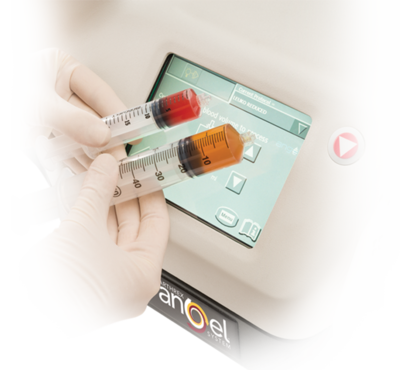Platelet Rich Plasma (PRP) Injection
Platelet Rich Plasma (PRP) injection is a non-surgical treatment that has been advocated to help treat orthopedic conditions. Platelets contain a many growth factors (GF) including platelet-derived epidermal GF, platelet-derived GF, transforming GF, insulin-like GF, vascular endothelial GF, endothelial cell GF, and basic fibroblast GF. Introducing PRP into a pathological tendon is thought to stimulate a healing response. Spinning the blood to concentrate platelets is thought to be important. Having easy access to all these potentially ‘healing’ GF’s is the attraction to PRP and explains why it has become so popular. It is an attractive idea. However, the treatment hasn’t been definitively proven. However, many athletes have used this treatment to try to heal injuries.
The idea is that injecting PRP into damaged tissues will stimulate your body to grow new, healthy cells and promote healing. Because the tissue growth factors are more concentrated in the prepared growth injections, researchers think the body’s tissues may heal faster. The current scientific data is split on the effectiveness of the treatment. We offer this treatment as an alternative to surgery given the minimal risk associated with the procedure, understanding that the scientific literature has not proven this to be a definitive solution.
What are the purposes of PRP injections?
Tendon injuries: Tendons are tough, thick bands of tissue that connect muscle to bone. They are usually slow to heal after injury. Doctors have used PRP injections to treat chronic tendon problems, such as peroneal tendonitis, Achilles tendonitis at the ankle.
Acute injuries: Doctors have used PRP injections to treat acute sports injuries, such as acute ankle sprains or injury to the plantar fascia
Postsurgical repair: Sometimes doctors use PRP injections after surgery to repair a torn tendon (such as a peroneal tendon) or ligaments (such as the anterior cruciate ligament, or ACL).
Osteoarthritis: Doctors have injected PRP into the joints of people with osteoarthritis.
It’s important to note that none of these uses have been definitively proven to provide a cure, although we have had clinical success in many patients and therefore continue to offer the option.
PRP injection process
Here’s what to expect from a typical PRP injection process:
A healthcare professional will draw a sample of your blood. We recommend that you are well hydrated the day before to make the process easier.
The blood is placed into a centrifuge. This is a machine that spins around very quickly, causing the blood components to separate. The separation process takes about 15 minutes.
A technologist takes the separated plasma and prepares it for injection into the affected area.
Your doctor will then inject the PRP into the affected area.
There is a fair amount of pain associated with the injection - as blood outside of the blood vessels is an irritant. The pain is worse in general than is felt with a steroid injection. We do not use sedation as the risks of sedation outweigh the benefit. Additionally, we cannot mix the PRP with local anesthetic such as Lidocaine as this will be damaging to the PRP and not ideal for the healing process.
We recommend that you are prepared to use a boot for a few days to a couple weeks based on the amount of discomfort. Given the issue with insurance and PRP, the boot should be ordered beforehand - our team will assist you on what to order. Typically a tall CAM boot from Aircast can be used.
Once the pain subsides and after a period of rest for 3-4 weeks, PT is initiated to help with recovery. In some cases, it can take 6 weeks to see improvement.
This is a lengthy process and can take up to 2 hours.
How much does PRP cost?
According to the American Academy of Orthopaedic Surgeons, very few insurance plans will provide any reimbursement for PRP injections. The costs must largely be paid out-of-pocket. Currently, the charge for the cost from the institution is approximately 800 dollars for a PRP injection. The institution does require payment at time of service.
What are the potential side effects of PRP?
Because PRP involves injecting a substance into the skin, there are potential side effects. PRP is autologous, which means it contains substances that come directly from your own body. This reduces the risks for an allergic reaction that can occur from injecting other medications, such as cortisone or hyaluronic acid. However, there are risks from the injection itself, including:
infection
nerve injuries
pain at the injection site
tissue damage
